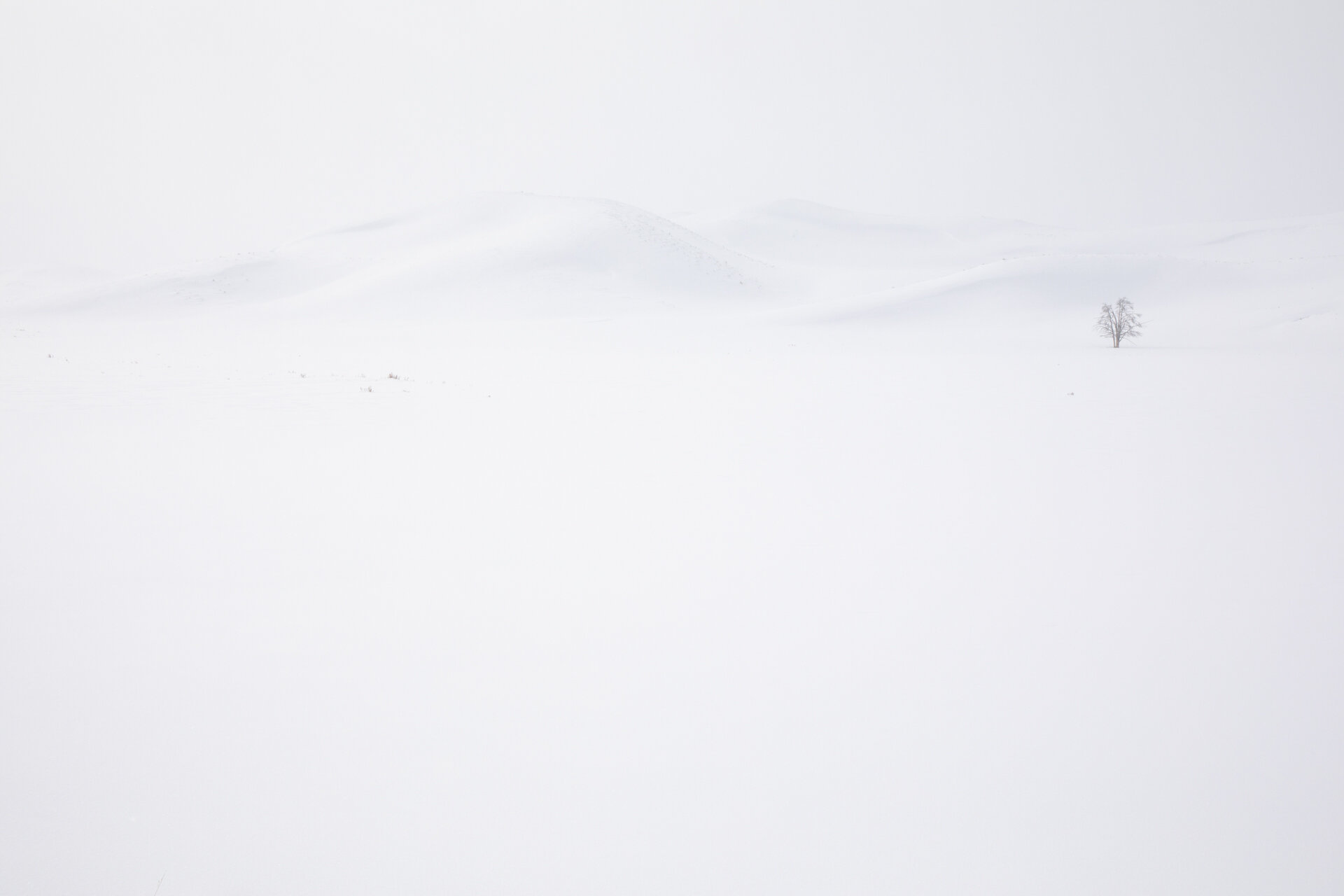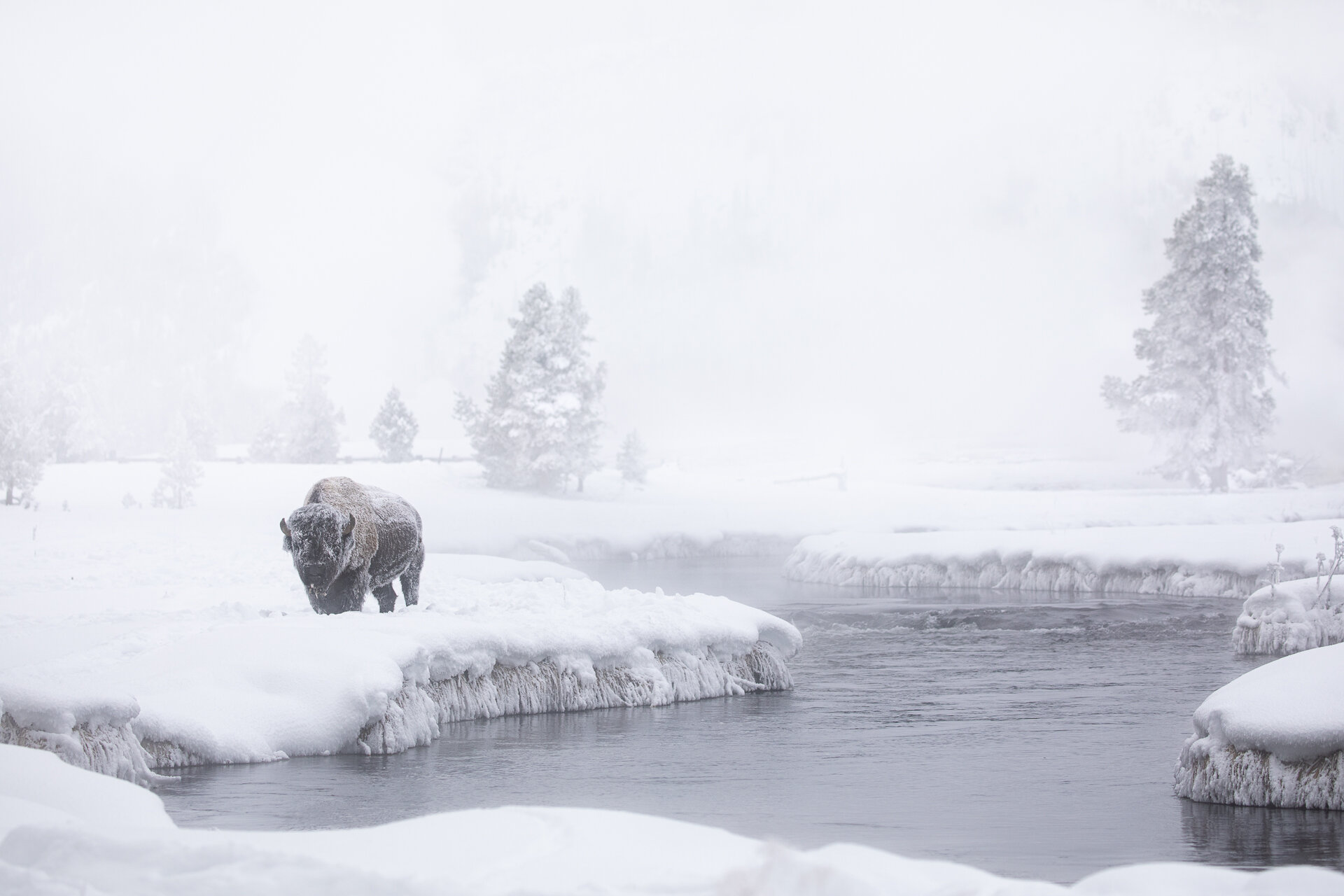Working with a white canvas in Yellowstone’s Hayden Valley this week.
Lone Bison
A lone bison grazes along the Firehole in Yellowstone National Park.
Falling snow collects on a bull moose as he browses in sagebrush flats
Winter Wildlife Feature I - Bison
Featured first on this series of posts highlighting wildlife and their unique strategies for enduring Yellowstone winter is the bison. Two key assets equip bison to survive in this unforgiving climate.
The distinct shoulder hump on their back, which is actually a protruding muscle, allows them to function as a 1 ton, living snow plow. Unlike other ungulates, such as moose and elk, which scrape with their front feet to access food under the snow, bison use this muscle to rock their massive heads back and forth exposing grass and sedge buried under several feet of snow. Some bison will opt out on this “snow-plow” technique, preferring to graze alongside thermal features where the warm steam from geysers or hot springs melts the snow on the surrounding grass.
When violent winter storms hit, prompting other wildlife to seek shelter from the chilling wind and blinding snow, bison just plop down where they are and wait it out. Their winter coats are so thick and well insulated that the falling snow doesn’t even melt on their back. In a heavy snow, you can watch the largest land animal North America vanish before your eyes in a matter of moments.






